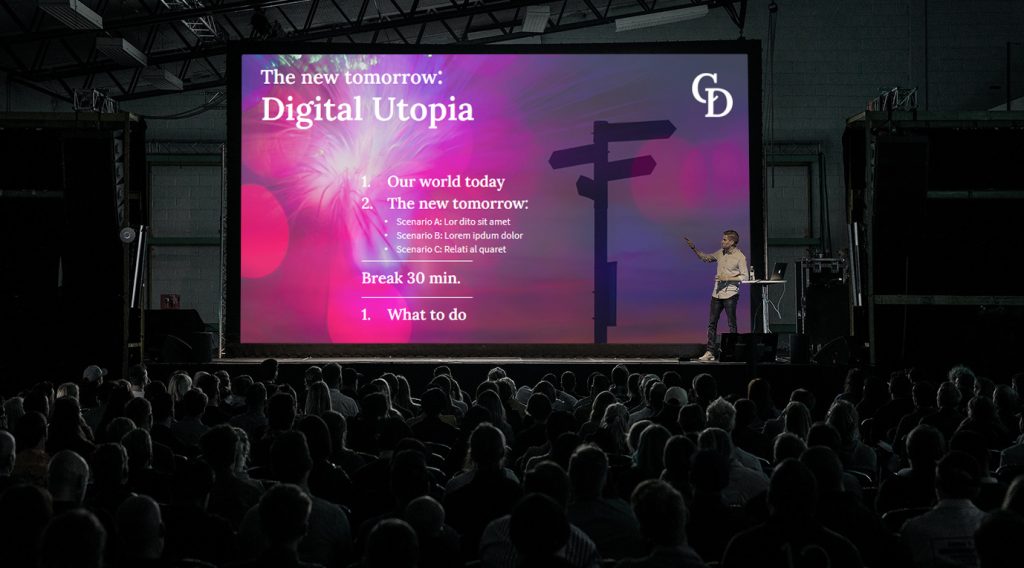Use orientation to gain and maintain attention
Orientation: a basic need
Humans are complex creatures. Yet, in some ways they’re pretty simple. Just by following a few basic rules, you can really help your audience to concentrate on your presentation. And what’s great is that applying these rules helps drive the success of your presentation, without any effort needed from your audience. An easy-to-use approach is Abraham Maslow’s hierarchy of needs. Maslow suggested we’re only able to immerse ourselves in something if we’re first reassured that all our basic needs are being met.
Will I go hungry?
To give you their full attention, your audience members need security. They need to know where the nearest restrooms are, and that they won’t go hungry or thirsty during the meeting or event. They also need other details: How long is this going to take? Where are we exactly? Who’s that at the front? Who are all these other people?

This might sound obvious, but if just one of these queries hasn’t been completely resolved in the minds of your audience, their attention is going to wander. You, as speaker, will have to battle against a front you’re barely aware of, and it’s going to cost you energy to keep everyone’s attention on your presentation.

Create a feeling of security
Prior to your presentation, spend some time sorting out mundane things, such as signposting the meeting room and opening doors. If your audience isn’t familiar with the location, make sure there are clear directions and signs for restrooms and checkrooms, as well as fire exits.
Explain where everyone can get themselves something to eat or drink, or where and when refreshments will be served. State the times of planned comfort breaks. Clarify the rules – is it OK for people to get up and help themselves to food and drink during the presentation, or should they wait until a set break?
Suggest rules for asking questions and generating discussions throughout the presentation – or maybe limit this to the end, depending on the context and your goals. State the agenda and sequence of topics – but if you specify times, stick to them! If you run overtime for any section, your listeners will become restless. You’ll lose their attention.
If participants don’t already know each other, briefly refer to the people sitting in the room. For instance, “It’s my pleasure to welcome 50 IT-specialists from the pharma industry who …” If there’s a full list of participants, mention it. If you’ll provide a handout or download details after the presentation, tell your audience up front, or suggest they take notes on anything they consider important.
And you are?
Our society dictates that modesty is a virtue, but you should at least explain to your audience who you are, and why you have the expertise to stand at the front and speak. Be clear about your role. Then no-one in the audience needs to question whether to believe you or not. That said, keep this part brief. You audience needs orientation, but not your whole resume!
Not a saber-toothed tiger in sight
Orientation is a basic need. It gives us the security we need to concentrate on a particular situation, subject or speaker. No one has to worry about a thing, because that archaic part of us feels safe in the knowledge that our basic needs are being met, and there’s no saber-toothed tiger prowling up the corridor.